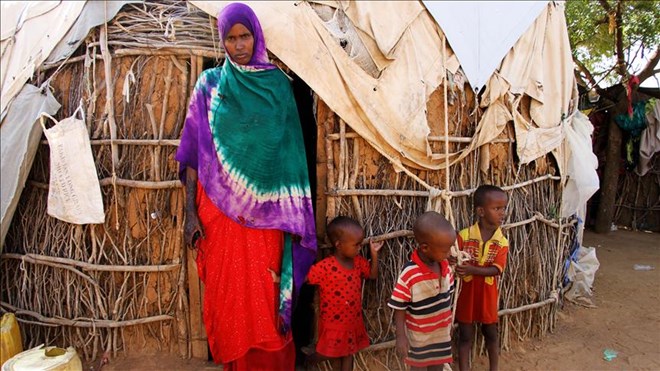
Saturday July 22, 2023

In Kenya's Dadaab refugee camp, the thousands of new Somali refugees are struggling as food insecurity worsens.
As Somali suffers its worst drought in years, Somali refugees have fled over the border to Kenya. In recent months, 135,000 have arrived at Dadaab, one of the world's largest refugee camps, located 90 kilometres from the Somali border.
The camp is home to 360,000 registered refugees and many more unregistered.
In February, the Kenyan government resumed refugee registrations at the camp, allowing the new arrivals access to food aid.
Such aid, however, is running low.
Reduced donor fundingFood rations have been cut from 80% to 60% of the daily nutritional requirements due to reduced donor funding, the World Food Programme says.
The war in Ukraine has driven focus away from other regions in need of aid. In May, a high-level donors’ conference for Kenya, Somalia and Ethiopia raised less than $3 billion of the $7 billion that organizers wanted for humanitarian aid.
The situation has been made worse by the end of the Ukraine grain deal, under which the WFP was procuring 80% of its global wheat supply from Ukraine. Since the deal expired on July 17, wheat prices have soared.
“Families that used to prepare probably three meals a day have now reduced to prepare either two meals or a meal a day, and that’s quite extreme,” says Colin Buleti, World Food Programme's head of programmes at Dadaab.
Aid workers say the reduced rations will likely make malnutrition cases worse.
Rise in malnutrition cases
384 malnutrition cases have been reported in the first half of this year in Hagadera, one of Dadaab's three sections, a major increase from the 347 reported there all of last year, according to the International Refugee Committee (IRC).
The malnutrition ward in Hagadera is over capacity. It is meant to handle 30 patients and is currently at 56.
"We are facing difficulties with the funding landscape, we have fewer resources to be able to manage these cases, including human resources, but also the commodities that we use to treat malnutrition," says Barbra Muttimos, IRC health manager in Dadaab. "We have to work with the little that we have."
Muttimos adds that even the nutrient-dense peanut paste used to treat children who are acutely and severely malnourished is threatened by reduced funding and the growing number of hungry people.
Insecurity
Despite fleeing their country, Somali refugees still face insecurity in Kenya.
Al-Shabab this month attacked a Somali military base just 12 kilometers (7 miles) from the border.
Somali forces are under pressure to assume security responsibilities as an African Union peacekeeping force continues its withdrawal from the country.
Kenya’s government is now in discussions with the United Nations on how to integrate the hundreds of thousands of refugees into host communities in the future.
The U.N. refugee agency says such integration is the best way to host refugees as donor funding shrinks.